Seun Lanlege and David Salami, co-founders of Polytope Labs, are gaining global attention for their groundbreaking blockchain infrastructure solution, Hyperbridge.
While many African blockchain startups focus on local payment systems, Lanlege and his team are taking a different path, building a global foundational infrastructure to solve one of blockchain’s longest-standing issues: interoperability.
After years of rigorous research, their protocol, which addresses one of the industry’s most complex challenges, has reached an impressive valuation of $200 million.
In simple terms, interoperability is the difficulty of transferring assets between different blockchain networks, for instance, from Ethereum to Solana. Although existing solutions called bridges have processed billions of dollars in transactions, they often share a critical security weakness: they rely on a multisignature (multisig) system.
According to Lanlege, this approach contradicts the very essence of blockchain’s decentralization, as multisig setups depend on trust and require a small group of individuals or servers to approve transactions.
Most existing blockchain bridges don’t actually transfer assets across networks. Instead, they lock tokens on the original chain and issue an IOU (I owe you) token on the destination chain. This design leaves a critical vulnerability; if one side of the bridge is compromised, hackers can gain access to all locked funds.
Hyperbridge takes a radically different approach by replacing this human-dependent system with a fully decentralized, math-secured architecture powered by smart contracts.
Rather than relying on human signers, Hyperbridge employs a network of relayers that gather and verify cryptographic evidence for finality proofs, confirming that a transaction on the originating blockchain is permanent. All verifications occur on the dedicated Hyperbridge chain.
The system’s standout feature is its bidirectional verification mechanism. Hyperbridge not only verifies proofs from other blockchains but also generates its own proofs, which must be externally validated. This creates a secure mathematical feedback loop, ensuring that every cross-chain transaction is verifiable and legitimate on both ends, completely removing the need for multisig setups.
To manage the high computational demand of verifying millions of transactions, Hyperbridge leverages the Polkadot network, renting Coretime (dedicated computational power) to ensure scalability and security.
The project has raised over $5 million through seed and public sales and has already processed $92.4 million in transaction volume. Its credibility received a significant boost when the Polkadot DAO voted to adopt Hyperbridge as the native bridge for the entire Polkadot ecosystem, a strong endorsement of its technology. Today, Hyperbridge supports 14 major blockchains, including Ethereum, Base, and Avalanche.
How Hyperbridge Redefines Blockchain Bridges
Hyperbridge isn’t the first project to tackle blockchain’s long-standing interoperability challenge, a problem that has attracted innovators, investors, and significant capital over the years. The global blockchain bridge market, valued at $0.7 billion in 2024, is projected to grow to $2.55 billion by 2029.
Popular projects like Poly Network, Binance Bridge, and Wormhole Bridge have collectively facilitated billions of dollars in cross-chain transactions. Yet, despite their success, most of these bridges share a critical design weakness, one that, according to Seun Lanlege, Hyperbridge has finally overcome.
“Existing bridges that have launched in a bid to unify blockchains have all been very flawed because a multisig powers them,” Lanlege explained.
Multisig, short for multi-signature, is the most common method for securing blockchain bridges. In this setup, multiple individuals or servers hold private keys that control a shared pool of assets. This structure ultimately introduces human dependency and risk into systems meant to be decentralized.
Investment, Traction, and Market Confidence
Hyperbridge has secured over $5 million in total funding, including $2.5 million from its seed round and $2.8 million raised through a public sale. The seed round was led by the Polkadot Ecosystem Fund, a collaboration between the Web3 Foundation and Scytale Digital, a venture capital firm focused on blockchain innovation.
To date, Hyperbridge has achieved remarkable on-chain performance, verifying over 10.2 million finality proofs, saving 12.2 trillion in gas fees, and processing $92.4 million in transaction volume.
Following its token launch, the market valued Hyperbridge at $70 million, a figure that later peaked at $200 million. According to Seun Lanlege, this surge reflects the community’s trust, respect, and belief in the platform’s ability to deliver real value.
In a significant vote of confidence, the Polkadot DAO recently approved Hyperbridge as the native bridge for the entire Polkadot network. This essential milestone reinforces its growing influence in the blockchain ecosystem.
Challenges and What Lies Ahead
Lanlege believes Hyperbridge has already overcome its most challenging phase. With the core infrastructure now complete, the platform currently supports 14 major blockchains, including Ethereum, Binance Smart Chain, and Avalanche.
Despite reports that the startup spends around $50,000 monthly on marketing, Lanlege maintains that the protocol’s results speak for themselves. “We don’t need to talk too much,” he said. “Technical blockchain founders can see the math and understand why it works.”
Still, the competition within the blockchain bridge ecosystem remains intense. Several rival protocols are achieving higher transaction volumes and pushing out innovations at a rapid pace. While Lanlege’s confidence in Hyperbridge’s mathematical foundation remains steadfast, it’s only a matter of time before other skilled engineers develop competing solutions of their own.









Leave a comment